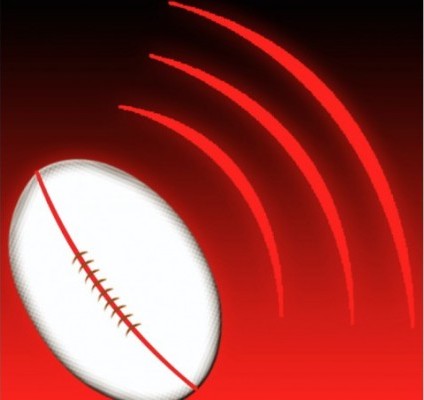USA Rugby Reorg Update
USA Rugby Reorg Update
So where are we in USA Rugby’s reorganization?
Senior Clubs
Using the Geographical Union system, Senior Clubs will form a voting system to produce a Club Council. That Club Council will put someone on USA Rugby’s Board, and the Council will also oversee disciplinary stuff, eligibility, and competition structure. A lot of that will stay the same, although there are always questions about such things and movement between divisions whether in the same club or with players who also play in Major League Rugby.
The road has been a little rocky, but it’s going to settle down eventually. This group is expected to spend the most money with USA Rugby, hiring the NGB to run national championships, for example. It will be interesting to see how long they do that, and whether, instead, they find it easier and more lucrative to run their own.
Economic Impact
Senior clubs bring in about $1.7 million in dues. It is very difficult to find much of a surplus that goes back to the organization because injury insurance is going to go up for them, and they are expected to ask USA to provide some services over and above the basic.
See all our USA Rugby crisis coverage here>>
College
There are five organizations in play here. College Rugby Association of America (CRAA) runs D1A, D1 Elite Women, D1 Women, and the western half of D2 Women (with a few exceptions). They represent maybe as many as 7,000 players. CRAA will pay as-yet-undetermined dues to USA Rugby for insurance and to support the national office, but are taking a “trust but verify” approach. CRAA also takes in $2,000 per team in D1A to pay for referees, a commissioner, and broadcast.
American College Rugby Association (ACRA) will oversee a few women’s D2 conferences on the East Coast. They will pay dues to USA Rugby but will run their own championships and take a “trust but verify” approach with USA Rugby. This group represents about 1,000 players, but could be more as some conferences have not committed.
American College Rugby (ARC?) is basically western D1AA teams. The group hasn’t released any announcements, and it seems that at least some conferences or teams are taking a wait-and-see approach. They, also, are expected to pay dues to USA Rugby. If the spring-15s DIAA teams band together that will likely be about 50 teams with about 2,200 players.
NIRA is the group of 25 or so NCAA varsity women’s teams based almost entirely in the Northeast. They run their own competitions and work in partnership with the CRAA on some referee initiatives. NIRA teams have their own insurance and are NCAA members. They have been paying $500 per teams for refs and other services to USA Rugby, and will likely continue to do that. If a NIRA player wants to play for a select side, or the USA, then she has to pay for a full USA Rugby membership. If a team wants to cross over into a USA Rugby event (such as 7s) that entire team needs to pay full USA Rugby dues.
National Collegiate Rugby (NCR), handles all small-college (unless those colleges change divisions because of the splintering), almost all of men’s D2, a chunk of women’s D2, one women’s D1 conference, two (and likely more) men’s D1AA, and one large men’s D1A conference (the Liberty). There are also some other men’s D1A teams reported to be considering moving over also.
This is a massive membership base over well over 500 teams with maybe as many as 14,000 players. Currently NCR is planning to receive all dues from teams and provide all membership and insurance services. There are currently no plans to forward dues to USA Rugby, although members will have an opportunity to donate to the national teams.
NCR’s predecessor, NSCRO, was hit hard by USA Rugby’s bankruptcy, with large amounts of money owed and not paid. So the organization moved quickly to run its own affairs. There are some questions remaining as to what complications arise due to not being a USA Rugby member. That is being worked out.
Economic Impact
Overall, college rugby is expected to pay $1.7 million in dues (plus an additional $80,000 or so from D1A teams into CRAA; Liberty D1A in NCR might do the same for their own purposes). But it’s unclear how much USA Rugby would keep and how much the conferences and oversight organizations would keep.
Ideally, about 33% of the dues would go to USA Rugby, but that would only work if NCR came into the fold. If they didn’t, that percentage could double.
Youth & HS
A big shift from a group working with an existing 501c3 and developing bylaws for them to a new group creating Terms of Reference first, then finalizing bylaws, and then developing a new 501c3, has caused some conflict.
But, in the end, the problems are mostly synthesized this way: “Who are you to run this restructure for Youth and High School? I don’t know you and don’t know your agenda.”
Too many feel that way about others they don’t know, or trust, and yet almost all of those involved have the same goal: get on the field safely, make sure we take care of our own, and get more younger athletes playing rugby.
Various leaders in what will now be called State Governing Bodies are pushing those areas of agreement.
What is happening now is that SGBs are trying to find agreement on the Terms of Reference, which in turn will map out how a Youth & HS Council is put together, what they have to do, and how they get a Youth & HS representative on the USA Rugby Board.
This Youth & HS Council will pay USA Rugby dues, but will expect to pay less in insurance than before because young people’s premiums are usually lower. The surplus dues should be kept by the SGBs but also might be used by the Council for game-growth initiatives. It’s that sort of open-ended mandate that makes people nervous.
It will probably work out, but there are SGBs unhappy with the process and looking at going on their own.
Votes on the TORs are happening this week, and the nomination process by region to populate the first Council will happen later this week.
Economic Impact
Youth & HS brings in about $1.7 million in dues. It is highly unlikely that USA Rugby will need much more than half of that, even with insurance. If they need more, like two-thirds, there will be plenty of pushback.
Is USA Rugby Ready?
If we all went back to being able to play rugby tomorrow, we could USA Rugby’s insurance policies would be in effect through August and memberships already paid for would be valid. New memberships, no doubt, would be very welcome to a cash-strapped USA Rugby.
After August? Well much has been made of USA Rugby CEO Ross Young not going into details about future insurance policies. But you’d expect him to not have done anything—we don’t even know who wants a policy, and how it will split up. That will probably be accomplished in the next couple of months, and if that happens, then it’s game on (as long as your local government allows it).
The complications after that? Cross-regional tournaments and cross-organizational play. That needs to be figured out.
The National Teams
We haven’t talked much about the national teams. One of the big losers in all of this are the players, many of whom are owed money by USA Rugby, and many more who will not assemble with the Eagles as hoped for because of COVID-19. But it’s the management of the team finances that has to change. Right now the equality between Men and Women, especially in 15s, is unacceptable.
All the players want to do is represent their country, but their experience is under threat because of poor financial management at the top. Now, will the national teams have to operate without a safety net? Hardly. World Rugby, the Golden Eagles, and the USOPC will all come in to help the national teams at the bottom line.
The National Teams will also likely lay claim to most of USA Rugby’s sponsorship and broadcast income, and well they should. Overall, USA Rugby’s High Performance segment should be OK, but consider:
If one team overspends badly, it will be up to the High Performance segment to figure it out and adjust
High Performance will have to be more transparent and more diligent in how it supports the age-grade teams.
Economic Impact
The bill for the national teams is around $6 million these days. The US Olympic and Paralympic Committee pays for a chunk of that, but certainly not all. This is a big deal when you think that a 10% overspend is the type of mistake that can sink an organization.
USA Rugby Partners
The membership safety net has to be taken away from this hugely underperforming organization. The supposedly for-profit arm of USA Rugby kind of needs to make a profit. No more taking credit for sponsorship deals already in place. This organization has to make some money, specifically for the Eagles, to justify its existence.
Economic Impact
FloRugby's deal with USA Rugby is going to run into issues as college rugby becomes more independent. Some of FloRugby's most important domestic events are now likely off the OTT provider's offerings. USARP has to leverage National Team events, broadcast, and sponsorship.











